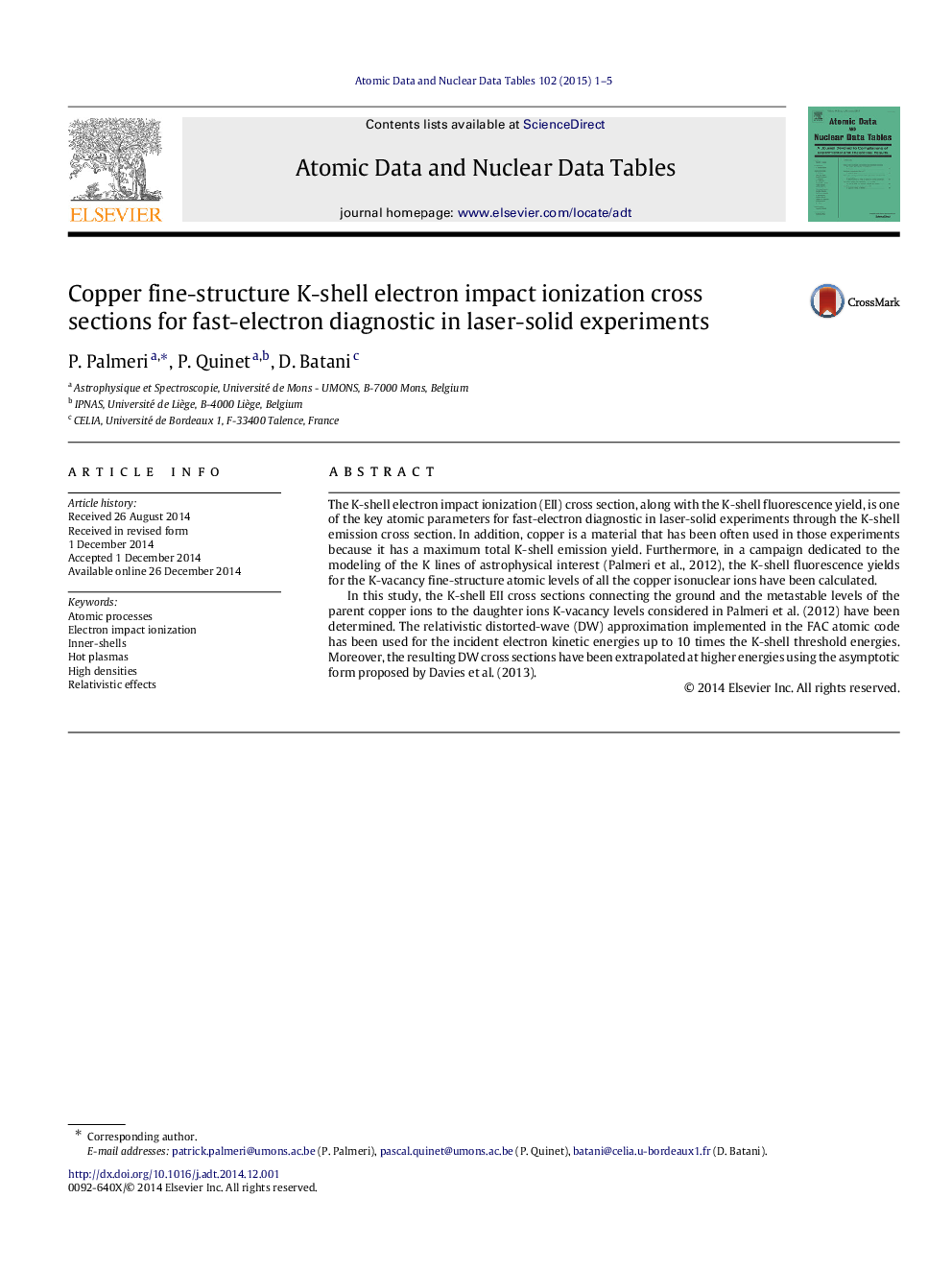| Article ID | Journal | Published Year | Pages | File Type |
|---|---|---|---|---|
| 1833789 | Atomic Data and Nuclear Data Tables | 2015 | 5 Pages |
The K-shell electron impact ionization (EII) cross section, along with the K-shell fluorescence yield, is one of the key atomic parameters for fast-electron diagnostic in laser-solid experiments through the K-shell emission cross section. In addition, copper is a material that has been often used in those experiments because it has a maximum total K-shell emission yield. Furthermore, in a campaign dedicated to the modeling of the K lines of astrophysical interest (Palmeri et al., 2012), the K-shell fluorescence yields for the K-vacancy fine-structure atomic levels of all the copper isonuclear ions have been calculated.In this study, the K-shell EII cross sections connecting the ground and the metastable levels of the parent copper ions to the daughter ions K-vacancy levels considered in Palmeri et al. (2012) have been determined. The relativistic distorted-wave (DW) approximation implemented in the FAC atomic code has been used for the incident electron kinetic energies up to 10 times the K-shell threshold energies. Moreover, the resulting DW cross sections have been extrapolated at higher energies using the asymptotic form proposed by Davies et al. (2013).
